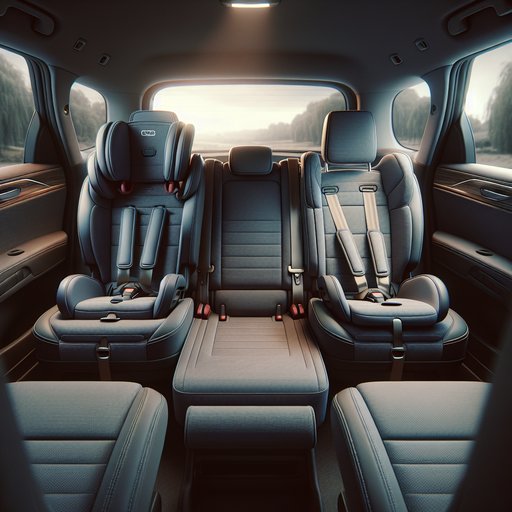
We spent a week with a 2024 Honda CR‑V Hybrid Sport-L AWD to see how it copes with real family duty: installing two ISOFIX/LATCH child seats plus a belt-positioning booster. Here’s how the anchors, belt routes, and rear-door geometry affect day-to-day use.
Our test car is the 2024 CR‑V Hybrid Sport‑L AWD, rated at 204 hp and 247 lb-ft from Honda’s 2.0-liter two-motor hybrid powertrain. Beyond the drivetrain, this trim’s practical kit—power tailgate, heated seats, and a roomy second row—matters most here. We ran school runs, grocery trips, and a weekend highway loop to audit installation ease, buckling access, and kid loading. Rear doors open wide—nearly 90 degrees by our angle app—which immediately helps with bulky bases and getting kids in while the door stays out of the way.
The outboard seats each have lower LATCH anchors (standard 11-inch spacing) clearly tagged; they sit a bit recessed but are easy to grab without plastic guides. Three top tether anchors are mounted on the rear seatbacks, one for each seating position. The middle seat lacks lower anchors (typical for this class), so center installs rely on the seat belt. We installed a narrow rear-facing convertible on the passenger side using lower anchors and a forward-facing convertible on the driver’s side, also on LATCH, then tethered both to their respective top anchors.
The cushion firmness helps get a tight lock without wrestling, and the seatback recline trick (recline, tighten, then return upright) worked well. The head restraints remove easily to accommodate tall forward-facing shells. With the rear-facing seat set for a toddler, the front passenger seat remained comfortable for a 5'10" adult; very large infant seats may still require sliding the front seat forward a notch or two. For the third position, we used a high-back booster in the center with the vehicle’s lap-shoulder belt.
Buckle stalks are short and semi-rigid—good for preventing false latching—but they sit low and can be partially buried between the two installed bases. A child may struggle to buckle independently; adults or older kids will manage with a two-hand approach. The center belt’s shoulder anchor aligns well for average-height children; routing through the booster’s guide was smooth with no belt snagging. As expected, there are no lower anchors for the center booster, and boosters do not use top tethers.
With two ISOFIX seats plus a center booster, overall width is tight but feasible if you choose narrower models. Swapping one LATCH install to a seat-belt install can free a crucial half-inch because it avoids the fixed 11-inch LATCH spacing. Note that many seat makers cap lower-anchor use by child weight; heavier forward-facing setups should be switched to seat-belt plus top tether per the seat manual. Day to day, the near-90-degree door opening, low door sill, and tall roof ease loading, and the flat rear floor helps kids step across without tripping.
Verdict: The 2024 CR‑V Hybrid scores high for anchor access, door geometry, and overall second-row flexibility. Two ISOFIX/LATCH seats plus a center booster fit with careful seat choice, though buckling access is the main pain point. Families regularly running full-time 3‑across may prefer a wider midsize SUV or a minivan; everyone else will find the CR‑V a stress-free, efficient family hauler. Bring your specific seats to the dealer for a test fit and favor narrow models for the smoothest experience.












